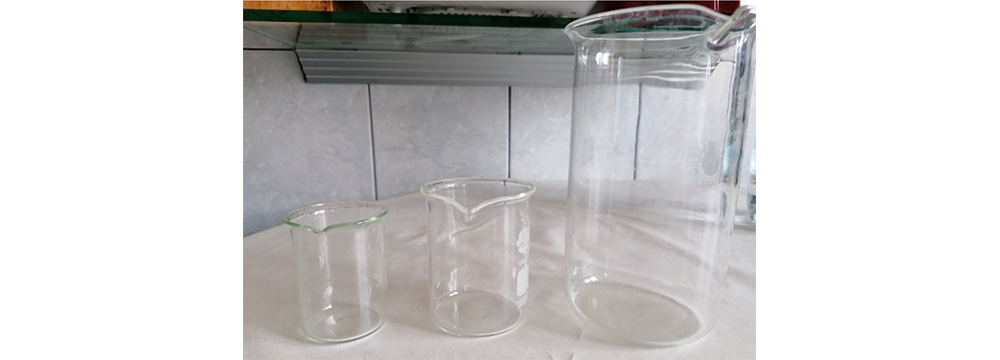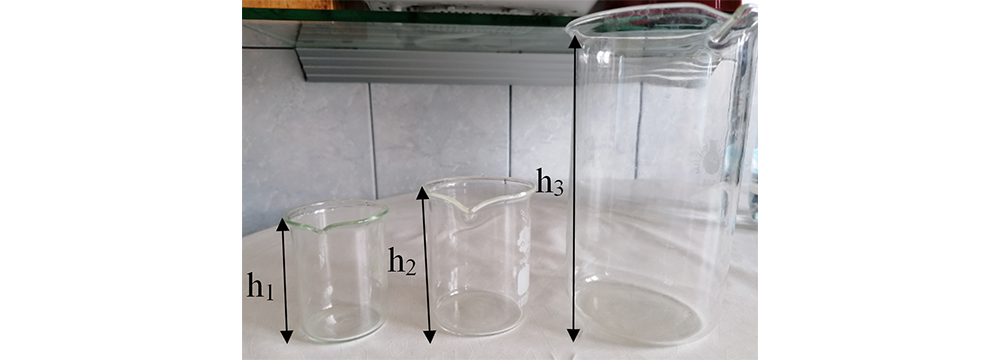II.1.2. The physical parameter measurement
To understand the notion of physical size, we must first clarify two notions, namely: classification and ordering.
To classify the bodies of a set means to divide them into groups (classes), according to a certain classification criterion (a property common to all the bodies in that set).
Example of classifications:
Students in a class can be classified by height into three groups:
- Group of short students;
- Group of students with average height and
- Group of tall students.
The bodies in the image from the aggregation states: ice cube, water from a cup and locomotive smoke can be classified, according to the state of aggregation, in three groups:
- Solids (ice cube);
- Liquids (cup water) and
- Gaseous (locomotive smoke).
To order the bodies of a set means to arrange them in ascending / descending order on the basis of an ordering criterion (a property common to all the bodies in that set).
Examples of ordering:
In sports class, students are ordered in ascending order of height.
If we wanted to order the 3 bodies in the image from the aggregation states: ice cube, water from a cup and locomotive smoke we will not be able to do it, as we will not find any ordering criteria, because they have no property common after which we could arrange them ascending.

By what criteria could you order them?

h1 < h2 < h3

D1 < D2 < D3
Depending on the ordering criteria, there are two categories of physical properties:
a) properties that can be sorting criteria, for example: length, height, diameter, surface area, body volume, event time, temperature, weight, etc.
b) properties that cannot be sorting criteria, for example: state of aggregation, color, smell of a body, taste of a food, shape of a body. We cannot make a quantitative comparison (greater or lesser) between these properties of bodies. What greater or lesser relationship should I put between red and blue?
Of these two categories, only the physical properties that constitute ordering criteria are measurable properties. They allow their quantitative comparison with other properties of the same kind, ie they can be measured. These are the properties that interest physicists and that will be studied by you during physics classes.
The measurable physical properties of a body are those properties that can be measured with a device and with which bodies can be ordered.
Examples of measurable physical properties:
The length of the table measured with the ruler is 90 cm.
The class time measured with the clock is 50 minutes.
The water volume from the bottle measured with graduated vessels is 2 L.
Measurable physical properties have been associated with physical parameters. E.g :
Examples of measurable physical parameters:
The one-way spatial extent has been associated with the physical parameter called length.
The two-way spatial extent has been associated with the physical parameter called area.
The spatial extent in all three directions (or the place occupied by the body in space) has been associated with the physical parameter called volume.
Time interval of an event = duration.
Intensity of interaction between two bodies = force.
The measurement of a physical parameter involves its quantitative comparison with the chosen measurement unit (also called standard).
The measurement of a physical parameter is done with the help of an appropriate measurement instrument.
Physical parameter and its corresponding measurement unit measure the same property.
Example:
The meter is a length;
The second is a time interval etc.
Physical parameters are denoted by symbols.
Example:
The symbol used for distance is d;
The symbol for area is A;
The symbol for time is t etc.
To measure a physical parameter means to compare it with another quantity of the same nature, chosen as a measurement unit.
Example. To measure the length of the table, denoted by l I used:
Measurement unit (standard): cm.
Measurement instrument: ruler.
Measurement procedure: comparison.
The result of the measurement is: l = 90 cm (the length of the table has the numerical value 90, and the chosen measurement unit was the centimeter).
| The result of measuring a physical quantity is given in the following form: |
|---|
| PHYSICAL PARAMETER (SYMBOL) = NUMERICAL VALUE ∙ MEASUREMENT UNIT (SYMBOL) |